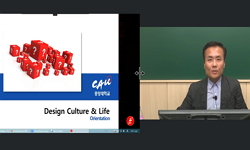I have divided the Song dynasty into several periods to analyze the price of rice. The first of these periods is from the early years of the North-Song dynasty to the Zhen Zong(眞宗) era, which spans about 60 years. During this time the price of ric...
http://chineseinput.net/에서 pinyin(병음)방식으로 중국어를 변환할 수 있습니다.
변환된 중국어를 복사하여 사용하시면 됩니다.
- 中文 을 입력하시려면 zhongwen을 입력하시고 space를누르시면됩니다.
- 北京 을 입력하시려면 beijing을 입력하시고 space를 누르시면 됩니다.
https://www.riss.kr/link?id=A60134209
- 저자
- 발행기관
- 학술지명
- 권호사항
-
발행연도
2007
-
작성언어
Korean
- 주제어
-
등재정보
KCI우수등재
-
자료형태
학술저널
-
수록면
205-248(44쪽)
-
KCI 피인용횟수
9
- 제공처
- 소장기관
-
0
상세조회 -
0
다운로드
부가정보
다국어 초록 (Multilingual Abstract)
I have divided the Song dynasty into several periods to analyze the price of rice. The first of these periods is from the early years of the North-Song dynasty to the Zhen Zong(眞宗) era, which spans about 60 years. During this time the price of rice 1 dou(斗) was between 10 and 30 wen(文). Next, from the Ren Zong(仁宗) era tothe Ying Zong(英宗) era, the price of 1 dou (斗) was between 10 and 30 wen(文) sometimes rising to 60 or 70 wen(文), especially after 1040. From the Shen Zong(神宗) era to the Zhe Zong(哲宗) era, the cost of 1 dou(斗) changed again, increasing from 70 to 100 wen(文). During the Hui Zong(徽宗) era, the price was 200 to 300 wen(文) on average and, at timesreached thousands wen(文), especially during the invasion period of Jin dynasty.
Throughout the early Gao Zong(高宗) era, the price of rice was 300 to 500 wen(文) during a good harvest seasons and, 500 to 1,000 wen(文) when it was a lean year. After the political situation settled down, the price of rice stabilized in the late Xiao Zong(孝宗) era, which lasted about 50 years. After the Guang Zong(光宗) era, the normal price for rice was between 300 and 400 wen(文). Thus, the price of rice was quite consistent, except during certain periods. Overall, when we consider the face value of money and the rate of inflation, the ascension of rice prices in the South-Song dynasty occurred at a lower rate when compared to the North-Song dynasty.
Generally the rate of production per 1 mu(畝) is regarded as 1 to 2 shi (石). In a statistical perspective, 1 family, of 5 people, needed 36 to 38 shi (石) of crops to live. To bring home the bacon' peasantry needed to cultivate 20 to 40 mu(畝) and, successfully gather a harvest more than a normal crop. This means that a tenant farmer had to cultivate twice as mu (畝)ch as a normal crop.
In the early Song Dynasty, people who purchased their meals from a market place would pay nearly 10 guan(貫) on food expenses, During the Sin long era, this price increased to 30 guan(貫) and, even went as high as 70 or 80 guan(貫) in the South Song Dynasty. Finally, in the late South Song era, a market place meal would cost around 140 guan(貫).
Whenever these food expenses increased, people needed to spend a great deal of money, and had no choice but to face poverty, especially during times of war. In addition, farmers did not benefit financially from these increases in food prices; and profit from price fluctuations were only allotted to landowners or rich merchants.
목차 (Table of Contents)
- Ⅰ. 序論
- Ⅱ. 北宋初부터 英宗代의 米價
- Ⅲ. 神宗代부터 北宋末期까지의 米價
- Ⅳ. 高宗ㆍ孝宗代의 米價
- Ⅴ. 寧宗부터 南宋末의 米價
- Ⅰ. 序論
- Ⅱ. 北宋初부터 英宗代의 米價
- Ⅲ. 神宗代부터 北宋末期까지의 米價
- Ⅳ. 高宗ㆍ孝宗代의 米價
- Ⅴ. 寧宗부터 南宋末의 米價
- Ⅵ. 米?의 생산량과 消費生活
- Ⅶ. 結論
- 〈Abstract〉
동일학술지(권/호) 다른 논문
-
베르너 파울슈티히, 『근대초기 매체의 역사 - 매체로 본 지배와 반란의 사회 문화사』, (지식의풍경, 2007)
- 역사학회
- 崔溶讚(서평자)
- 2007
- KCI우수등재
-
- 역사학회
- 姜?亞
- 2007
- KCI우수등재
-
- 역사학회
- 裵亢燮(Bae Hang-Seob)
- 2007
- KCI우수등재
-
- 역사학회
- 金伯哲(Kim Paek-Chol)
- 2007
- KCI우수등재
분석정보
인용정보 인용지수 설명보기
학술지 이력
| 연월일 | 이력구분 | 이력상세 | 등재구분 |
|---|---|---|---|
| 2020 | 평가예정 | 계속평가 신청대상 (등재유지) | |
| 2015-01-01 | 평가 | 우수등재학술지 선정 (계속평가) | |
| 2011-01-01 | 평가 | 등재학술지 유지 (등재유지) |  |
| 2009-01-01 | 평가 | 등재학술지 유지 (등재유지) |  |
| 2007-01-01 | 평가 | 등재학술지 유지 (등재유지) |  |
| 2004-01-01 | 평가 | 등재학술지 선정 (등재후보2차) |  |
| 2003-01-01 | 평가 | 등재후보 1차 PASS (등재후보1차) |  |
| 2002-01-01 | 평가 | 등재후보학술지 유지 (등재후보1차) |  |
| 1999-07-01 | 평가 | 등재후보학술지 선정 (신규평가) |  |
학술지 인용정보
| 기준연도 | WOS-KCI 통합IF(2년) | KCIF(2년) | KCIF(3년) |
|---|---|---|---|
| 2016 | 1.05 | 1.05 | 0.91 |
| KCIF(4년) | KCIF(5년) | 중심성지수(3년) | 즉시성지수 |
| 0.84 | 0.75 | 1.505 | 0.51 |





 DBpia
DBpia







